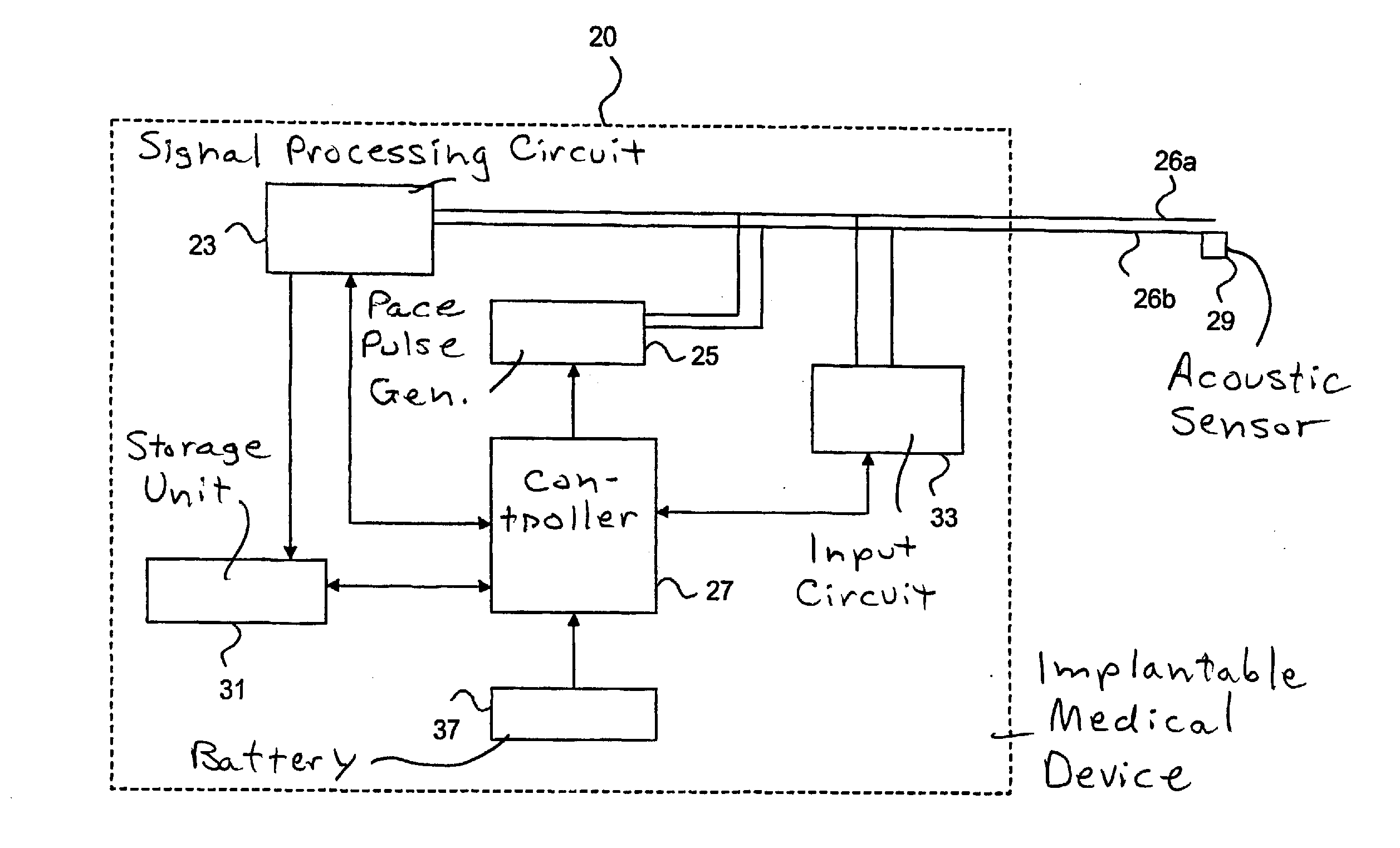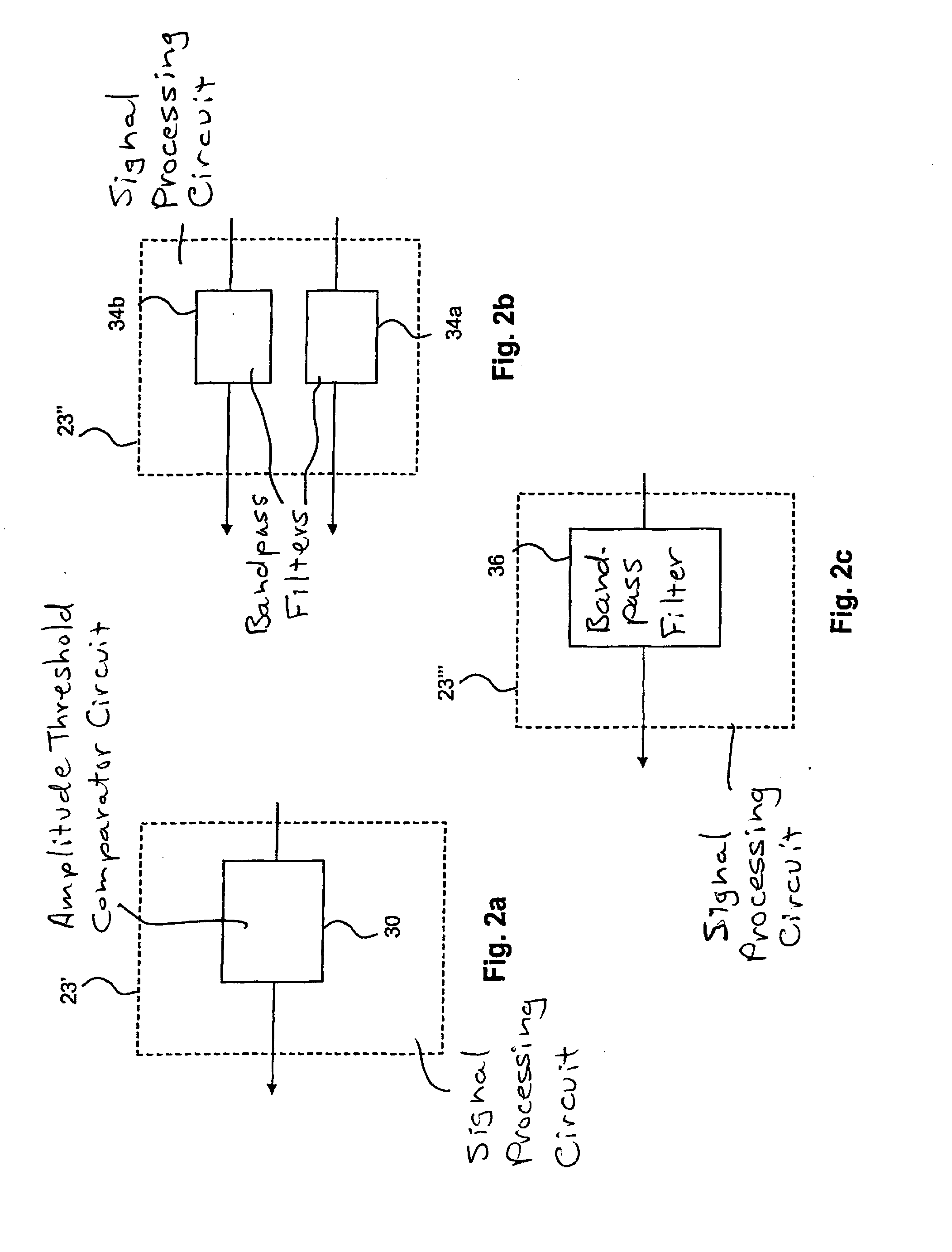Implantable medical device with optimization procedure
a medical device and optimization technology, applied in the field of implantable medical devices, can solve the problems of cumbersome and time-consuming to obtain knowledge, inexact heart sounds obtained, and procedure is thus time-consuming, and achieve the effect of increasing diastolic filling time and more time for relaxation
- Summary
- Abstract
- Description
- Claims
- Application Information
AI Technical Summary
Benefits of technology
Problems solved by technology
Method used
Image
Examples
first embodiment
[0077]Returning again to FIG. 4, at step 54, durations of successive heart sound signals and / or sums of heart sound signals are determined or calculated. According to one embodiment, the durations of successive second heart sounds (S2) are determined. Subsequently, at step 56, an optimization procedure is initiated and performed. The optimization procedure will be described below in more detail. In this first embodiment, the pacing pulses are controlled iteratively based on the determined durations of successive second heart sounds to determine a combination of stimulation intervals including at least one of an AV interval and a VV interval that causes a substantially synchronized closure of the aortic and pulmonary valves.
[0078]In another embodiment, durations of successive first heart sounds are determined in step 54 and an optimization procedure is initiated at step 56. In this embodiment, the pacing pulses are controlled iteratively based on determined durations of successive fi...
second embodiment
[0084]In a second embodiment, the optimization starts with an initial setting of the device or with a setting set by the physician. The initial setting may also be selected at random. In this approach, all adjacent settings are tested and a step size may be 10 ms for AV (delta) and VV (delta2), see FIG. 6a. That is, all combinations of AV, AV+delta, AV-delta, VV, VV+delta2, and VV-delta2 are tested as can be seen in FIG. 6a. The setting with the smallest S2 separation, i.e. the shortest duration, is then chosen as the midpoint and the procedure is repeated, see FIG. 6b. The procedure is repeated until none of the adjacent settings improves the synchronizity, i.e. offer a better value with respect to the S2 separation, see FIG. 6c. The midpoint combination of AV and VV interval is thus selected as setting for the device and the optimization procedure is completed, see FIG. 6d.
third embodiment
[0085] a so called design of experiment approach is used. In this procedure, the boundary combinations of the AV and VV intervals of the predetermined combination space are evaluated together with at least one midpoint value, see FIG. 7. A polynomial that approximates the S2 duration resulting from the different AV and VV intervals is thereafter determined. The maximum value of the polynomial within the combinations space is then derived, i.e. a combination of an AV interval and a VV interval that results in a minimum duration of the second heart sound within the combination space is identified. This AV and VV interval combination may then be selected as setting for the device, see FIG. 7. Alternatively, the combination identified by means of the polynomial may be evaluated. For example, such an evaluation may be performed by testing the identified combination and the adjacent combinations, i.e. the setting are changed one “step” at each direction in accordance with the procedure de...
PUM
 Login to View More
Login to View More Abstract
Description
Claims
Application Information
 Login to View More
Login to View More - R&D
- Intellectual Property
- Life Sciences
- Materials
- Tech Scout
- Unparalleled Data Quality
- Higher Quality Content
- 60% Fewer Hallucinations
Browse by: Latest US Patents, China's latest patents, Technical Efficacy Thesaurus, Application Domain, Technology Topic, Popular Technical Reports.
© 2025 PatSnap. All rights reserved.Legal|Privacy policy|Modern Slavery Act Transparency Statement|Sitemap|About US| Contact US: help@patsnap.com



